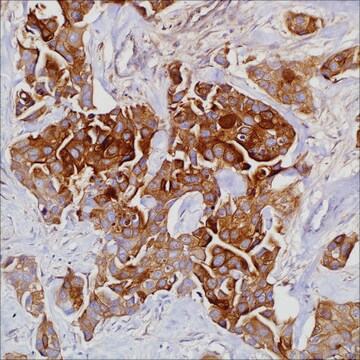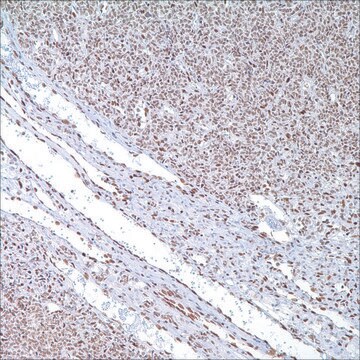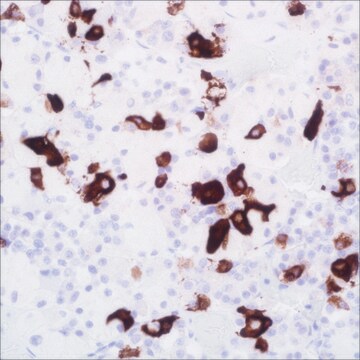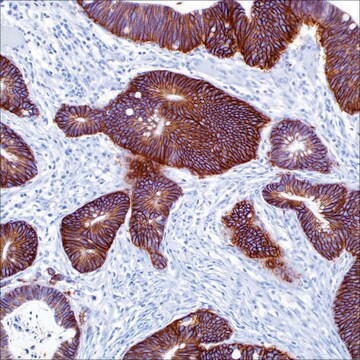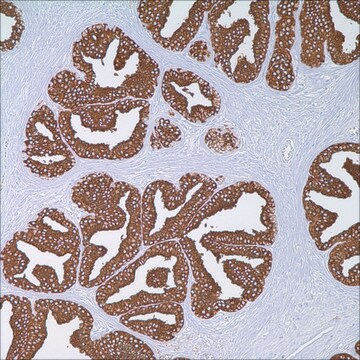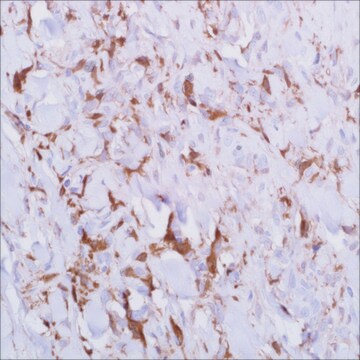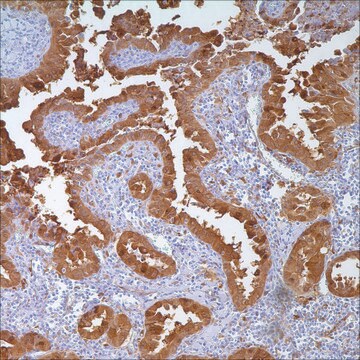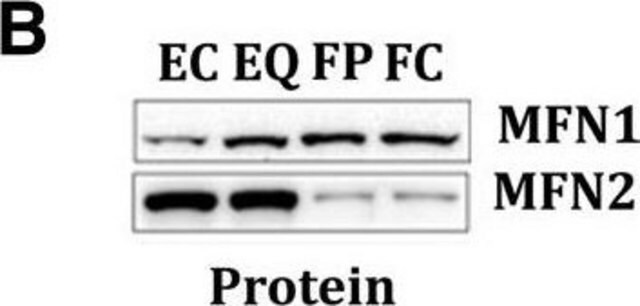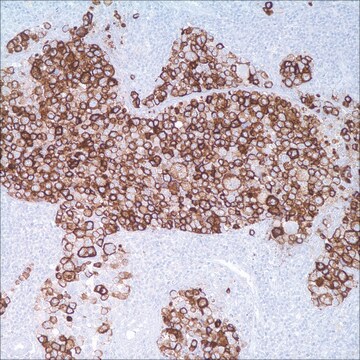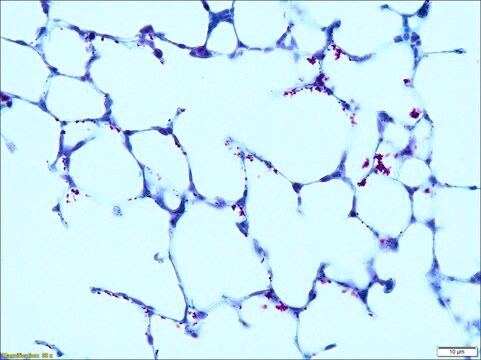350R-2
FOXP1 (EP137) Rabbit Monoclonal Primary Antibody
About This Item
Productos recomendados
origen biológico
rabbit
Nivel de calidad
100
500
conjugado
unconjugated
forma del anticuerpo
culture supernatant
tipo de anticuerpo
primary antibodies
clon
EP137, monoclonal
descripción
For In Vitro Diagnostic Use in Select Regions
Formulario
buffered aqueous solution
reactividad de especies
human
envase
vial of 0.1 mL concentrate (350R-24)
vial of 0.1 mL concentrate Research Use Only (350R-24-RUO)
vial of 0.5 mL concentrate (350R-25)
vial of 1.0 mL concentrate (350R-26)
vial of 1.0 mL concentrate Research Use Only (350R-26-RUO)
vial of 1.0 mL pre-dilute Research Use Only (350R-27-RUO)
vial of 1.0 mL pre-dilute ready-to-use (350R-27)
vial of 7.0 mL pre-dilute ready-to-use (350R-28)
vial of 7.0 mL pre-dilute ready-to-use Research Use Only (350R-28-RUO)
fabricante / nombre comercial
Cell Marque®
técnicas
immunohistochemistry (formalin-fixed, paraffin-embedded sections): 1:100-1:500 (concentrated)
isotipo
IgG
control
lymph node, tonsil
Condiciones de envío
wet ice
temp. de almacenamiento
2-8°C
visualización
nuclear
Información sobre el gen
human ... FOXP1(27086)
Descripción general
Calidad
 IVD |  IVD |  IVD |  RUO |
Ligadura / enlace
Forma física
Nota de preparación
Note: This requires a keycode which can be found on your packaging or product label.
Download the latest released IFU
Note: This IFU may not apply to your specific product lot.
Otras notas
Información legal
¿No encuentra el producto adecuado?
Pruebe nuestro Herramienta de selección de productos.
Código de clase de almacenamiento
12 - Non Combustible Liquids
Clase de riesgo para el agua (WGK)
WGK 2
Punto de inflamabilidad (°F)
Not applicable
Punto de inflamabilidad (°C)
Not applicable
Elija entre una de las versiones más recientes:
Certificados de análisis (COA)
¿No ve la versión correcta?
Si necesita una versión concreta, puede buscar un certificado específico por el número de lote.
¿Ya tiene este producto?
Encuentre la documentación para los productos que ha comprado recientemente en la Biblioteca de documentos.
Nuestro equipo de científicos tiene experiencia en todas las áreas de investigación: Ciencias de la vida, Ciencia de los materiales, Síntesis química, Cromatografía, Analítica y muchas otras.
Póngase en contacto con el Servicio técnico